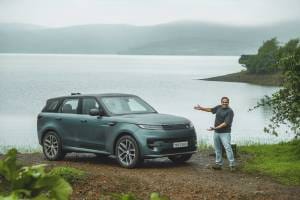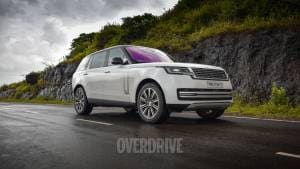Exclusive comparison test: Range Rover Sport vs Volvo XC90
Perception changes everything, including expectations. Take for example the Range Rover Sport, the more affordable version of the larger Range Rover, now with a four-cylinder 2-litre petrol engine, which you'd expect to not be up to the job of lugging a 2.1 tonne SUV around. Or the Volvo XC90, which you'd expect to be comfortable, safe and maybe just a bit boring with its similar 2-litre petrol engine and hybrid credentials. But things are not always what they seem, and we're about to find the turning point of perception for these two unconventional choices.
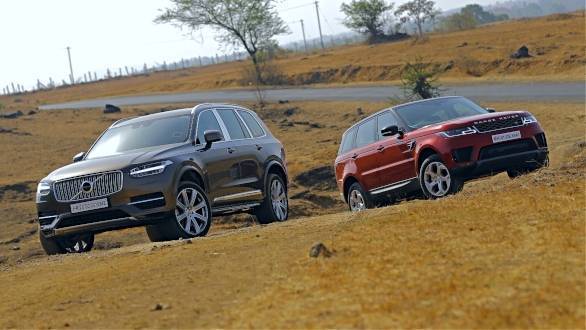
Styling
Both these SUVs stand out on their own, and are a far rarer sight on our roads than the German competition. The Sport has the traditional Range Rover look, and presents a sportier take on the iconic silhouette, despite offering a seven-seat option unlike the larger Rangie. The sloping roofline definitely sets it apart from the SUV crowd, since it bends the three-box rule quite a bit. With the wide-set lights at either end, it also makes the Sport look a lot lower and wider than it actually is. Our test car, the mid-spec SE, wore 20-inch wheels, a contrast roof and piano black accents which only serves to enhance its polite aggression. Higher-spec models use 'pixel LED' lighting which are even more detailed than the standard LED on our car.
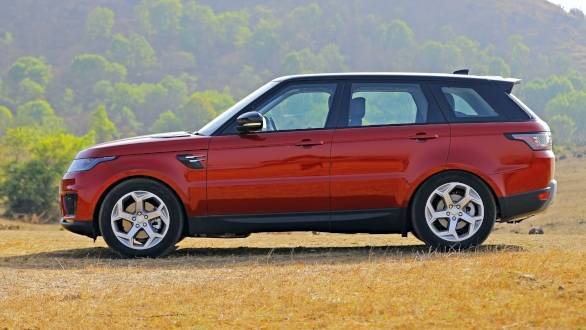
The XC90 T8 on the other hand is pure understated class, and its sharp creases and polished brightwork, make for a very sophisticated, and expensive-looking, SUV. The combination of simple lines, the triple creased-wheelarches, and concave surfaced sides are pretty timeless, in their own right. Next to the Sport, it looks a little plain, despite riding on 21-inch wheels and wafer-thin rubber. The Volvo also appears taller, though the specs suggest otherwise.
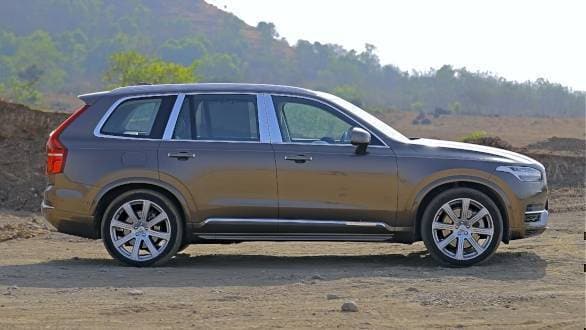
Interiors
At this rarefied end of the spectrum, you get exactly the kind of luxuries you'd expect on both, with a few vital differences to the feel of it. Climbing into it the Sport is more of a stretch than on the XC90, despite the access height mode dropping the car a few milimetres when you open the door. The Sport's cabin can be specified in lighter colours, but even with the ebony theme, it immediately feels larger inside; all-encompassing, if you will.
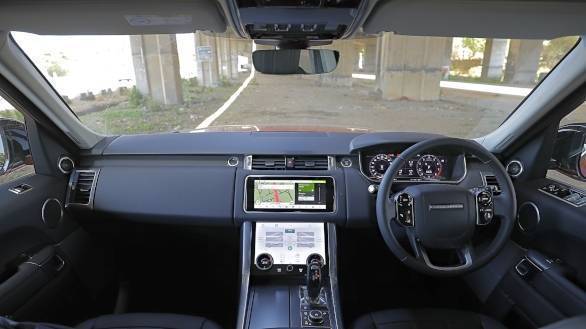
You sit pretty high up, higher than in the Volvo, and the door pockets while large, don't have bottle holders. It'll also likely take some time to get used to the position of the window switches, door handles and lock/unlock buttons not being where you expect them to be. The materials used all around feel expensive to the touch, and the little details stand out. Like the backlit touch controls on the steering wheel, or the glass panel which doubles up as buttons for the rear-view mirrors. The two 10-inch touchscreens that make up Range Rover's Touch Pro Duo look slick but aren't the most responsive, and puzzlingly, don't include Apple/Android integration for playing your music through the standard 8-speaker setup. Though, having physical controls for the climate control is a huge plus. The rear bench is wide enough for three adults, and having a reclining seat back means you can stretch out to get a little more under thigh support. You might need to set the driver's seat higher up to fully stretch your legs out though, since space for your feet might be tight otherwise. At this price, we wish keyless entry came standard and you will have to specify that as an extra.

The XC90 is easier to get into, no questions there, and your kids or older passengers will appreciate that. Another thing you'll appreciate is the more sensible ergonomics and modern feel, with everything being exactly where you'd expect it to be, and with every function of the car accessible through the single 12-inch vertically stacked touchscreen. Materials are similarly plush, and the tissue-soft Nappa leather does feel special. Volvo sent us the four-seater T8 Excellence for our shoot, since the nearly-34 lakh rupee cheaper seven-seater Inscription wasn't available. But, you get pretty much the same feature set, with 16-speaker Bowers & Wilkins audio, ventilated and massage front seats, and more. From our time in the regular XC90, we remember excellent second-row seat comfort. The Volvo just about gets an edge here for having a slightly better feature set, which is slightly offset by the spaciousness of the Sport.
Safety features
Here again both SUVs are as safe as they come, with multiple airbags front and rear, as well as radar driver assistance systems but the Volvo scores higher for including blind spot assistance, adaptive cruise control and lane keep assist as standard on the T8 Inscription as well.
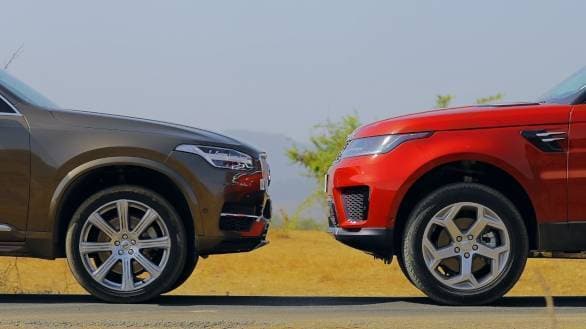
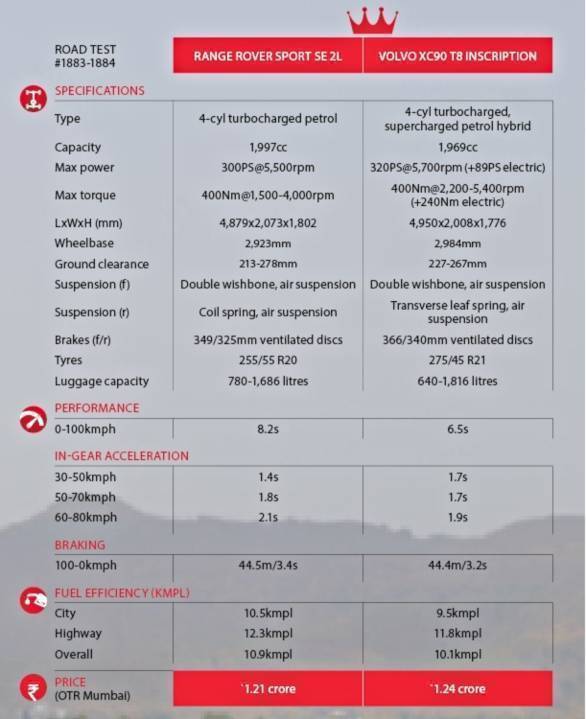
Engine, performance & efficiency
Both these full-size luxury SUVs buck tradition, in a way, by offering a four-cylinder 2-litre petrol under the hood. The Sport is plenty capable though, with its 300PS and 400Nm torque never really making you miss the feel of a torquey diesel. The eight-speed automatic does a good job here, offering quick, unobtrusive shifts to keep you in the meat of the torque. The engine also sounds more refined than the Volvo when you do decide to open the taps. Where the two differ is in how much more eagerly the Volvo responds when you get on the throttle.
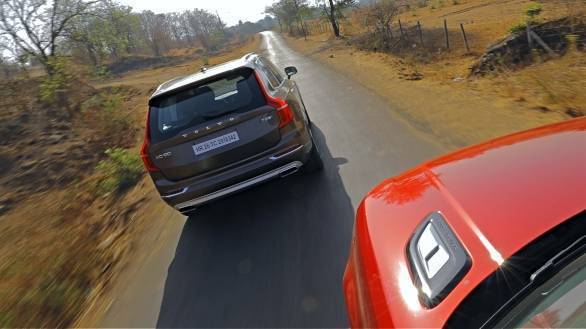
The Volvo offers the advantage of hybrid power, with the addition of an electric motor sending torque to the rear axle, while an eight-speed sends power to the front. The electric system adds a substantial 89PS and 240Nm torque to the turbocharged and supercharged petrol's figures, for a total of 410PS and a tree-uprooting 640Nm torque! Ironic, since the XC90 T8 is an SUV with an environmental conscience, but with the throttle reactions of a sportscar thanks to the electric motor piping in - making it most unlike a Volvo!
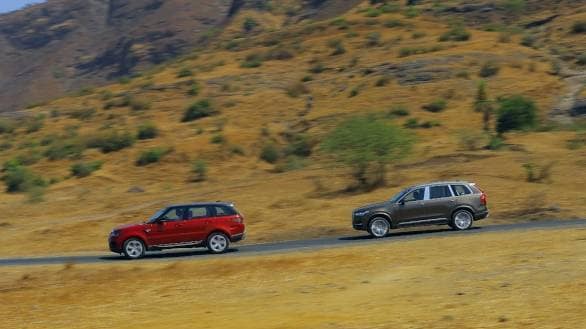
Though in the interest of keeping a level-playing field for our testing, we ran the battery right down and locked the electric motor out of contention. Despite that and being about 300kg heavier (T8 Excellence 2,394kg vs Sport 2,076kg), the XC90 managed a quicker 6.5s dash to 100kmph from standstill, versus the Sport's 8.2s. The Sport was marginally quicker during in-gear acceleration tests, ostensibly down to the quicker-responding gearbox. Range Rover claim a 201kmph top speed for the Sport, lower than the 230kmph claimed for the XC90 T8. The Sport managed marginally better efficiency, once the XC90's hybrid advantage is taken out of the picture, both in the city and on the highway. If you factor that in, the Volvo will manage a claimed 40km on electric power alone, and we'd have vastly different city efficiency numbers!
Ride and handling
The Sport was a big surprise here offering the better-sorted ride of the two. As Tuhin eloquently put it, "The ride is unbelievable!" Both offer air suspension, but the Sport with its 20-inch wheels and taller tyres simply glosses over bad roads at speeds that'll have you wincing in the XC90, with its more delicate, brittle feeling ride. The Sport's plushness doesn't come into effect at lower speeds, and it tends to bob over wavy roads. In these circumstances, the XC feels a little more composed, but the suspension can get noisy over bad roads. For ride comfort, even from the back seat, the Range Rover Sport is the one you should look at. Unless you're okay with ordering your XC90 T8 with the smaller 19- or 20-inch wheels also available, which we know lends the SUV a vastly more supple ride.
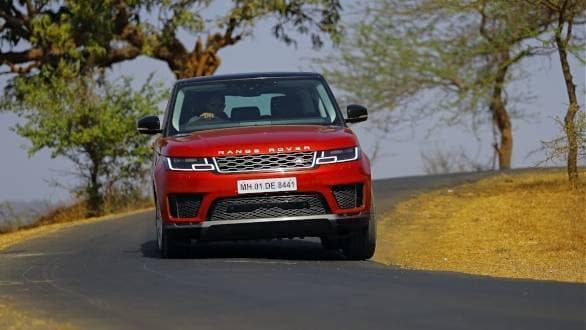
And thanks to the better weighted steering, with just a bit more feedback, the Sport is also the one to look at if you're going to be behind the wheel. The Sport does a better job of neutralising body roll, but that doesn't mean you're going to want to chuck either of these into corners. Both will tend to understeer if you do that, but the Sport feels like it announces it better thanks to the steering weighing up when approaching the limit. The Volvo suffers from an over-assisted steering, which makes it nervous-feeling at speed.
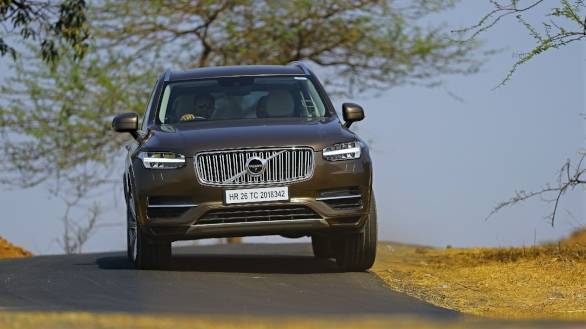
These two, being 2+ tonne SUVs prefer shedding speed before a corner, and the Sport's brakes are easier to modulate, and give a better feel at the pedal. The Volvo with its regenerative braking system, can either feel sharp or spongy, and takes some getting used to. Both come to a halt from 100kmph in virtually the same time and distance, but the Volvo stops substantially quicker when braked from 80kmph coming to a halt in 25.7m and 2.6s, versus the Range Rover's 32.8m and 2.8s.
If you were going to take either off-road, which is unlikely, both have AWD systems. But the Range Rover is more accomplished here, and the Terrain Response system takes the guesswork out on different terrain. Unfortunately, we weren't able to test this aspect out fully.
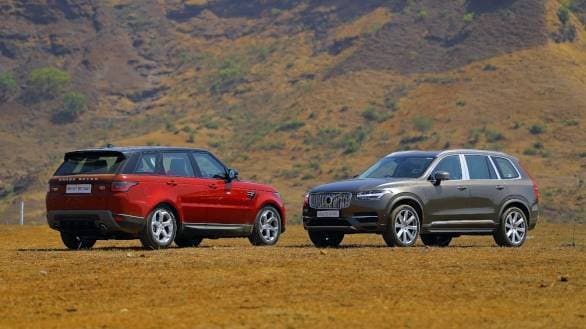
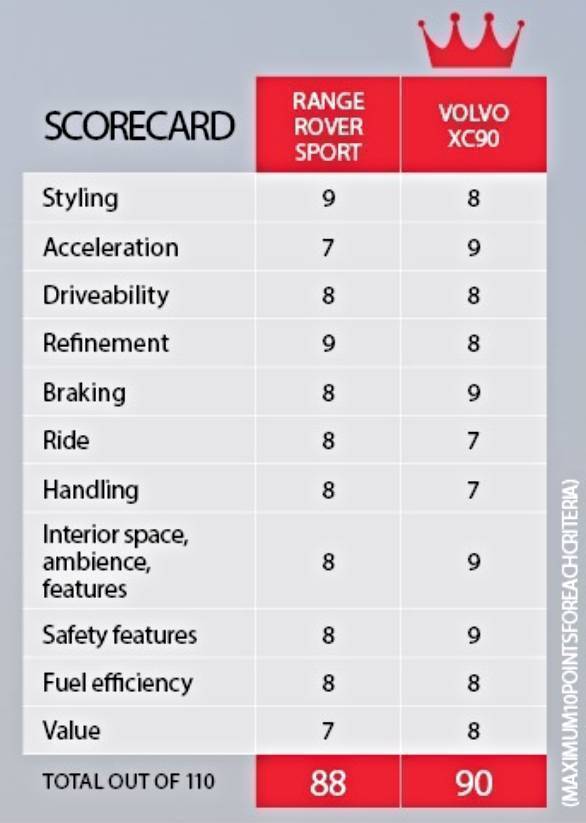
Verdict
This is really tough to call both are closely matched in a lot of areas, and both are sufficiently unique to give consideration to over more conventional (and less expensive) rivals. The Range Rover brings with it heritage, off-roading prowess, ride comfort and a tangibly cool image. Where it loses ground to the Volvo, is as a package.
Ultimately, with the Volvo hybrid, you're getting more features as standard, and a taste of the future. You could genuinely cut down fuel costs, if your daily commute falls under the electric-only 40km range. And who's going to bet against the future, right?
Starts Rs 80.9 Lakhs
1969cc
Automatic
235
420
-NA-
Starts Rs 91.27 Lakhs
1997cc
Automatic
300
400
-NA-
